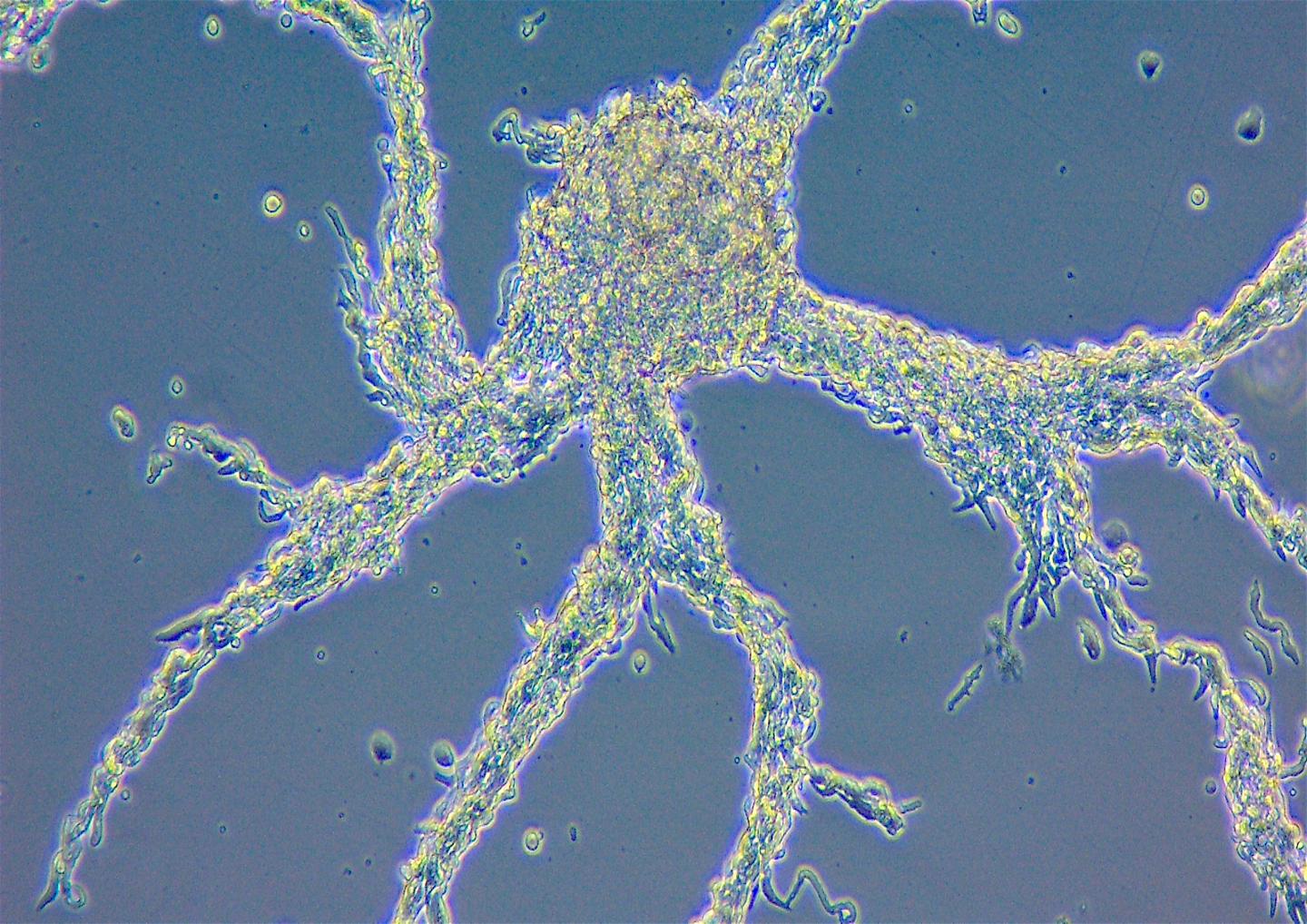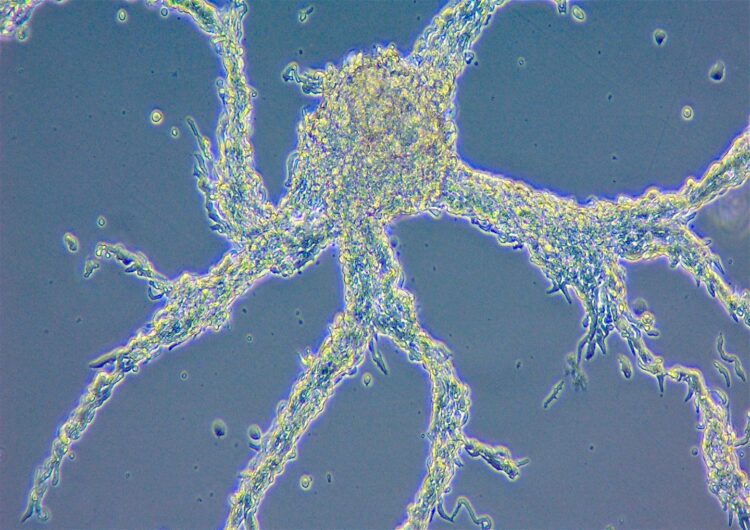How sulfur metabolism may have paved the way for the evolution of multicellularity

Credit: © MPI of Immunobiology and Epigenetics, B. Kelly
The transition from single-celled organisms to multicellular ones was a major step in the evolution of complex life forms. Multicellular organisms arose hundreds of millions of years ago, but the forces underlying this event remain mysterious. To investigate the origins of multicellularity, Erika Pearce’s group at the MPI of Immunobiology and Epigenetics in Freiburg turned to the slime mold Dictyostelium discoideum, which can exist in both a unicellular and a multicellular state, lying on the cusp of this key evolutionary step. These dramatically different states depend on just one thing – food.
A core question of Pearce’s lab is to answer how changes in metabolism drive cell function and differentiation. Usually, they study immune cells to answer this question, however, when first author Beth Kelly joined the group they decided to shift focus. “We figured that if we were interested in how nutrient availability induces changes in how cells function, there was no better organism to study than Dicty, where starvation causes cells to go from existing on their own to forming a multicellular organism. This is an immense shift in biology”, Erika Pearce said.
Starvation drives multicellular aggregation of this social amoeba
Simply by depriving D. discoideum of its food supply, they could turn this organism from single cells into a multicellular aggregate, allowing them to examine the factors driving this multicellularity. The aggregate behaves as a complex, multicellular organism, with individual cells specializing to having different functions, and moving as a whole. Multicellular D. discoideum eventually form a protective spore, allowing the population to survive starvation.
Starving D. discoideum induce a rapid burst of reactive oxygen species (ROS) production. ROS are small molecules that are made by our cells, but were also used for signaling early in evolution, before more complex, receptor-based systems existed. However, when ROS levels are too high, they become damaging, oxidizing proteins and nucleic acids, eventually causing cells to die. So, an increase in ROS is generally accompanied by the production of antioxidants to control these ROS. Beth Kelly noted, “in our case, production of the antioxidant glutathione increased to counter the massive ROS burst upon starvation. If we gave the starving slime mold extra glutathione, we were able to block this increase in ROS and, importantly, stop the formation of the multicellular aggregate, keeping the cells in a single-celled state.”
Starving Dicty alter their metabolism
In turn, when they blocked glutathione production using an inhibitor, they found that instead of promoting an even faster aggregation, this reversed it, maintaining the single-celled state for longer. This suggested that some function of supplemented glutathione, other than antioxidant activity, was reversing the aggregation process. They carefully considered how glutathione is made. It consists of only three amino acids, cysteine, glycine, and glutamine. Kelly added each of these components individually back to starving cells and she found that only cysteine alone could reverse multicellular aggregation upon starvation.
What is unique about the biology of cysteine? It is one of only two amino acids that contain sulfur, and this sulfur is critical for a wide variety of processes in proliferating cells. It is used for making new proteins, is vital for enzyme activity, and supports metabolic processes for energy production. Limiting cysteine therefore limits sulfur supply, slowing growth and proliferation, and indicating that there are insufficient nutrients for these processes to continue. For Dictyostelium, this means that they should transition to a multicellular state, to form a spore that can survive this period of nutrient limitation, preserving the population.
Sulfur dictates cell function and multicellularity
It turned out that the loss of sulfur was the important process underlying this multicellularity, and that increasing ROS was a clever means for D. discoideum to achieve this end. By increasing ROS, starving Dictyostelium consequently increase glutathione production. “This in effect pulls cysteine in the cells into glutathione, limiting the use of its sulfur for proliferation and protein production. By artificially blocking glutathione production, or by providing extra cysteine to the starving cells, we could restore this sulfur supply, recovering proliferation and the single-celled state,” Beth Kelly said. “Thus, we revealed how sulfur dictates a switch between the single-celled and multicellular states.” Sulfur and oxygen were common, small elements in an ancient world, and this work reveals how they may have played a role in the origins of multicellularity.
“Beyond this, we think that our work has therapeutic implications for more complex organisms. Cancer cells are highly proliferative, and some cancer cells specifically preserve sulfur metabolism. Restricting or targeting sulfur metabolic processes in these cells may enhance anti-tumor immunity,” Pearce said. Immune cells traffic through environments containing distinct nutrient mixtures, and immune cell function depends on metabolic pathway activity. Manipulating sulfur metabolism may be a means to modulate immune cell function. Overall, examining such conserved nutrient signaling pathways in the early eukaryote Dictyostelium will likely be highly informative for mammalian cell function.
###
Media Contact
Marcus Rockoff
[email protected]
Original Source
https:/
Related Journal Article
http://dx.





